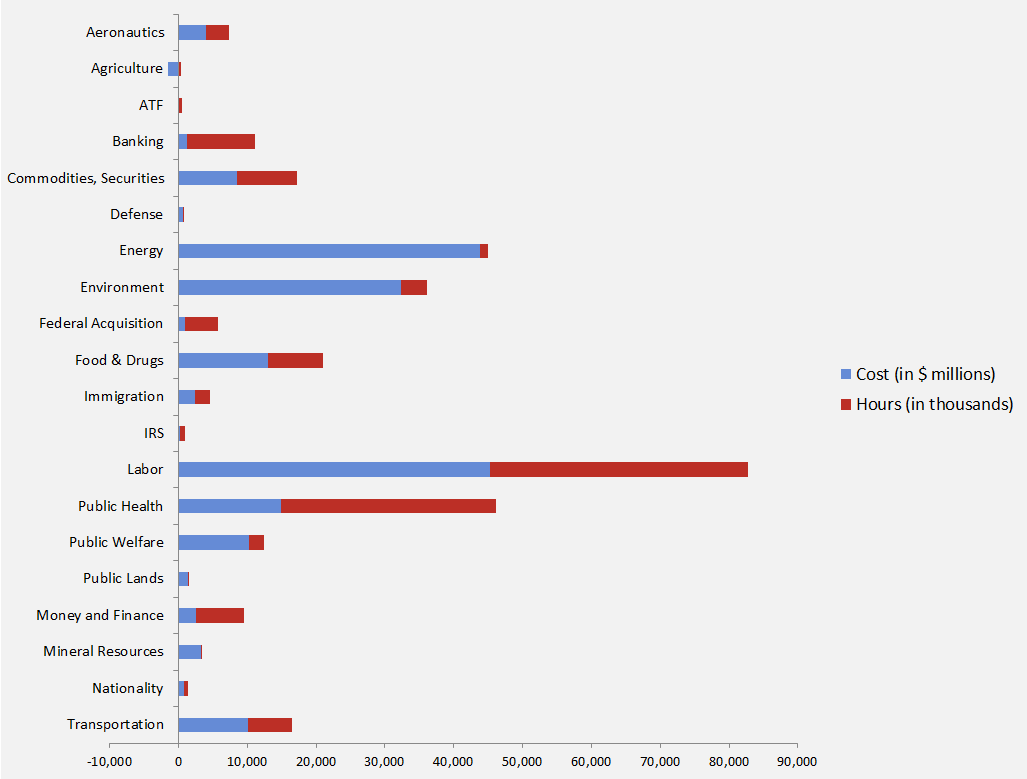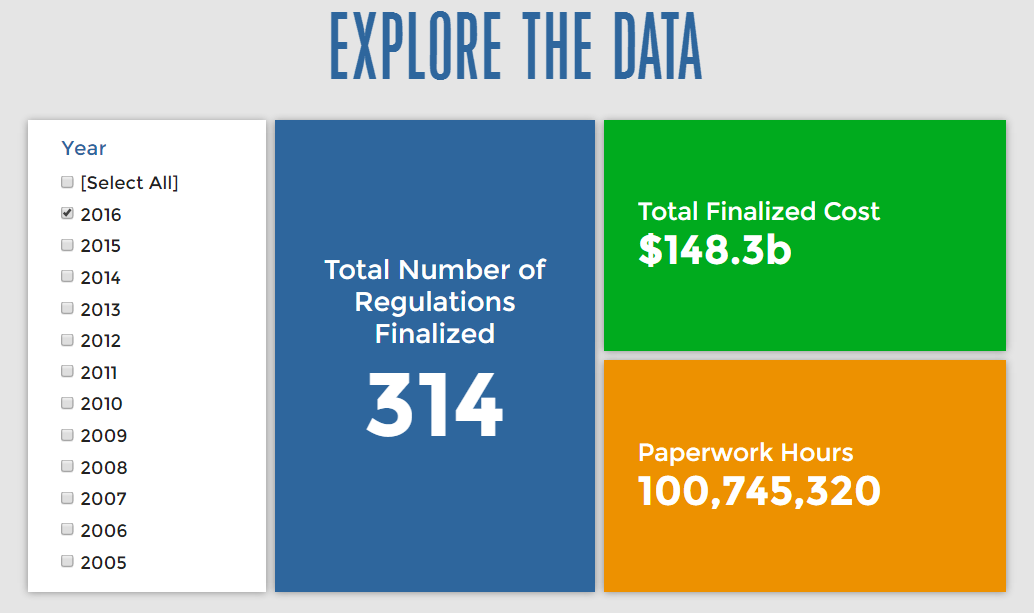Week in Regulation
November 7, 2016
$324 Million in Burdens
It was a busy week for the volume of regulation, as there were 17 measures that monetized costs, but the overall magnitude was pedestrian compared to recent standards. This week regulators published $324 million in total costs, with $28 million in annual burdens, and 761,000 paperwork burden hours. There were also $96 million in previously proposed rules, imposing 2.6 million burden hours, that were finalized this year. The per capita regulatory burden for 2016 is $607.
Regulatory Toplines
- New Proposed Rules: 44
- New Final Rules: 71
- 2016 Total Pages of Regulation: 78,020
- 2016 Final Rules: $148.3 Billion
- 2016 Proposed Rules: $48.5 Billion
The American Action Forum (AAF) has catalogued regulations according to their codification in the Code of Federal Regulations (CFR). The CFR is organized into 50 titles, with each title corresponding to an industry or part of government. This snapshot will help to determine which sectors of the economy receive the highest number of regulatory actions.
The Department of Education (ED) finalized two notable rules this week. The most expensive, “Teacher Preparation Issues,” imposes more than $270 million in costs during the next ten years and roughly 732,000 paperwork hours. The rule aims to increase the dissemination of more meaningful data on teacher preparation program quality.
ED also finalized a somewhat controversial measure on a new way for student borrowers to avoid loan repayment, “based on an act or omission of a school.” The cost of complying with the paperwork requirements (109,000 hours) is just $9.8 million, but the rule would also result in more than $2.4 billion annually in government spending, amounts not authorized by Congress. The measure also moved through the regulatory process relatively quickly; the proposed rule was published in June of this year and the final rule arrived at OIRA less than three months later. Comments were due by August 1, so that means the agency processed and responded to the 10,801 public comments in roughly one month.
Affordable Care Act
A rule tangentially related to the Affordable Care Act (ACA) actually eliminated burdens this week. The “Merit-Based Incentive Program” cut $7.4 million in costs and more than one million paperwork hours. However, given the scale of the ACA, this paperwork cut amounts to just half a percent of the law’s burden.
Since passage, based on total lifetime costs of the regulations, the Affordable Care Act has imposed costs of $51.6 billion in final state and private-sector burdens and 172.4 million annual paperwork hours.
Dodd-Frank
The Department of Treasury finalized a rule to update the recordkeeping requirements of “Orderly Liquidation Authority.” The measure increases reporting to the receiver to determine if there are any financial risks posed by a transfer. The rule imposes $37 million in long-term costs, with just 11,000 paperwork hours.
Click here to view the total estimated revised costs from Dodd-Frank; since passage, the legislation has produced more than 74.8 million final paperwork burden hours and imposed $36.5 billion in direct compliance costs.
Total Burdens
Since January 1, the federal government has published $196.8 billion in compliance costs ($148.3 billion in final rules) and has imposed 129.4 million in net paperwork burden hours (100.7 million from final rules). Click below for the latest Reg Rodeo findings.












